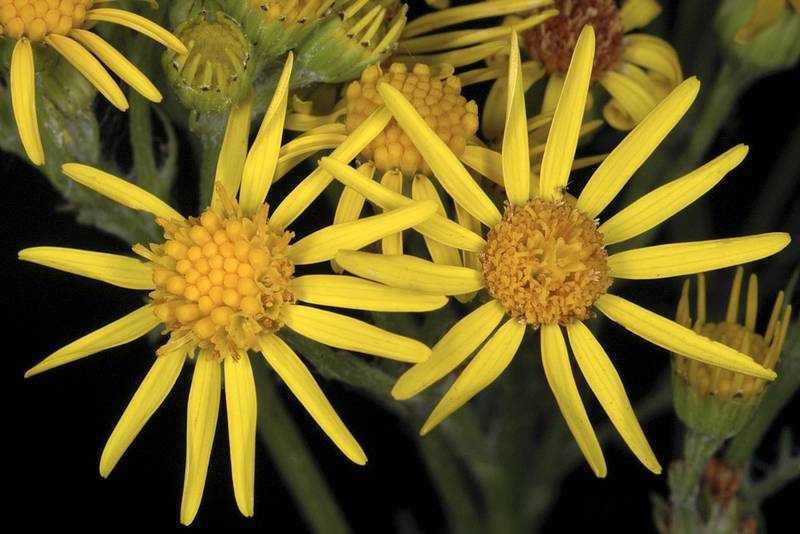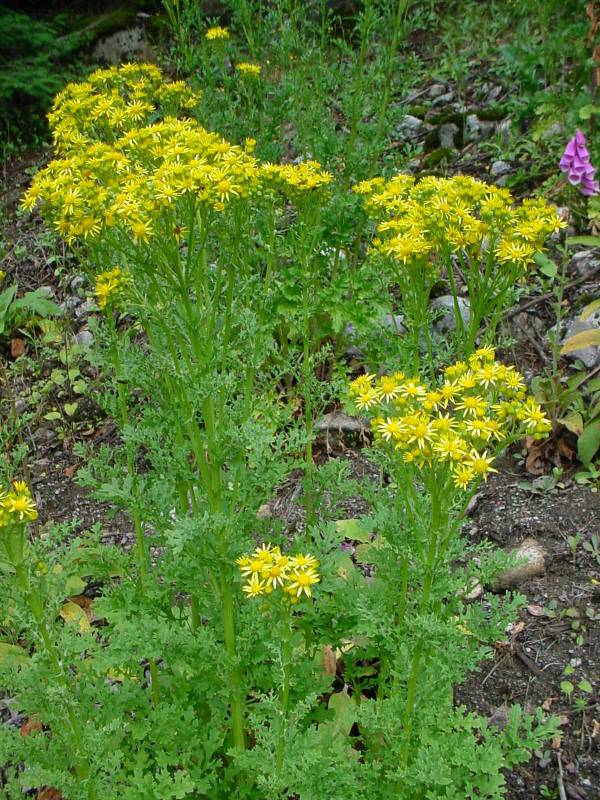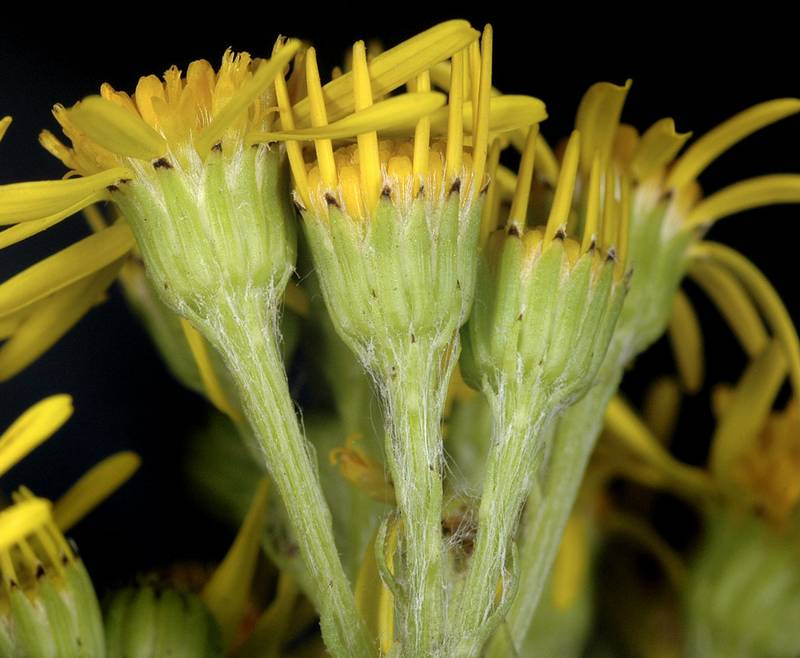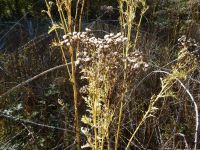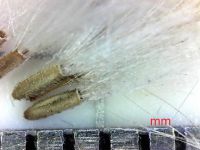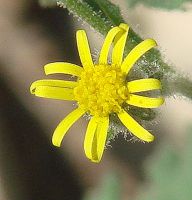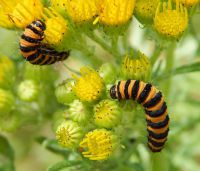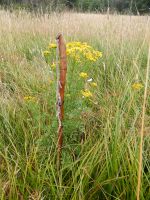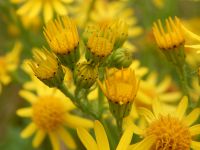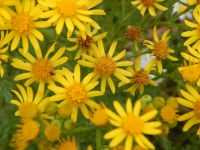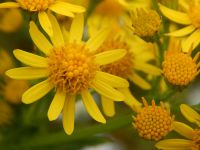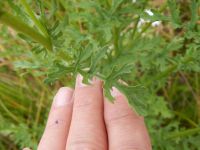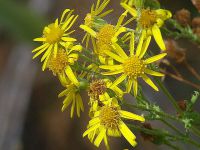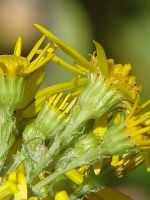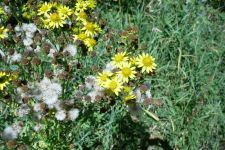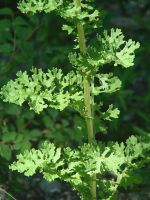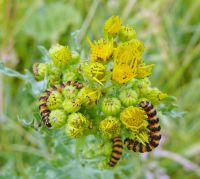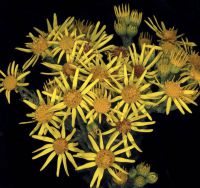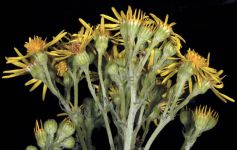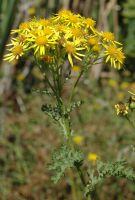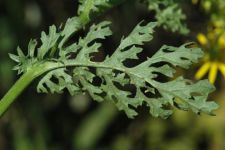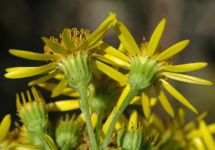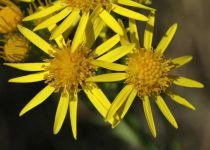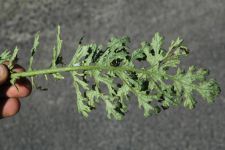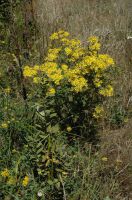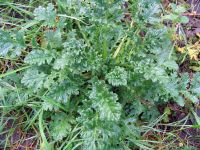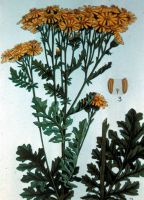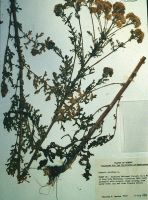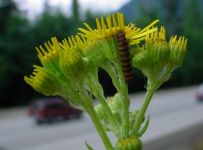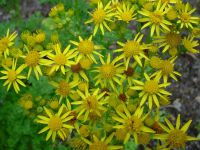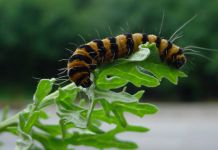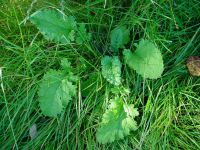Distribution: Occurring chiefly west of the Cascades crest in Washington; British Columbia to California, east to Idaho and Montana; also in northeastern North America.
Habitat: Roadsides, fields, pastures, forest edges, wastelots, and other disturbed areas.
Flowers: June-September
Origin: Introduced from Eurasia
Growth Duration: Perennial
Conservation Status: Not of concern
Pollination: Bees, flies, beetles, wasps
Biennial or short-lived perennial from a taproot; stems solitary or several, erect, simple up to the inflorescence, 2-10 dm. tall.
Evenly distributed along the stem, only slightly reduced upward, mostly 2-3 times pinnatifid, 4-20 cm. long and 2-6 cm. wide, the lower petiolate and often deciduous, the upper becoming sessile toward to top of the stem.
Heads rather numerous in a short, broad inflorescence, the disk usually 7-10 mm. wide; involucre about 4 mm. high, its bracts about 13, over 1 mm. wide, dark-tipped; rays about 13, 4-10 mm. long.
The upright stem covered with large, twice-divided leaves will usually identify this species; the 13 involucre bracts and 13 ray flowers can be helpful.
Publication: Fruct. Sem. Pl. 2: 445. 1791.
PNW Herbaria: Specimen records of Jacobaea vulgaris in the Consortium of Pacific Northwest Herbaria database.
WA Flora Checklist: Jacobaea vulgaris checklist entry.
OregonFlora: Jacobaea vulgaris information.
E-Flora BC: Jacobaea vulgaris atlas page.
CalPhotos: Jacobaea vulgaris photos.
USDA Plants: Jacobaea vulgaris information.

